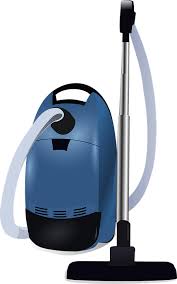What is vacuum and how does a vacuum cleaner work?« Back to Questions List
|
We generally think of the term ‘vacuum’ as a space where there is nothing at all. Strictly speaking there is no such region as vacuum. What we actually mean by ‘vacuum’ is the space from which a gas or a mixture of gases (such as air) has been partially removed so that it is at a low pressure compared to the atmosphere. Partial vacuum exists when the pressure is slightly lower than the atmospheric pressure and high vacuum exists when the pressure is much less compared to the atmospheric pressure. A vacuum cleaner uses air to pick up little bits of dirt and blow into the dust bag. Basically it pulls air (sucking dirt) in by creating a partial vacuum inside the device. When we switch the device on, a motor starts rotating a fan attached to it. The fan forces air towards the exhaust port thereby creating an air pressure difference behind and in front of the fan. The pressure level in the area behind the fan drops below the pressure level outside the vacuum cleaner. Now there is a partial vaccum created inside the vacuum cleaner. The outside air draws up all small objects, pushes itself into the vacuum cleaner through the intake port because the air pressure inside the vacuum cleaner is lower than the pressure outside. Now there is a constant steam of air carrying dirt from the ground moving through the intake port and out the exhaust port. As the dirt-filled air makes its way to the exhaust port, it passes through a filter bag. These bags are made of porous woven material (typically cloth or paper), which acts as an air filter. The tiny holes in the bag let air particles pass by, but not the dirt particles thus collecting the dirt and debris in the bag. |

